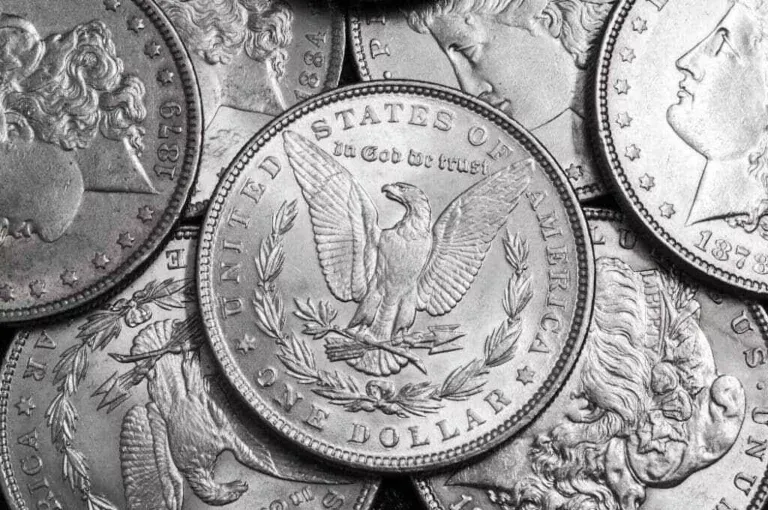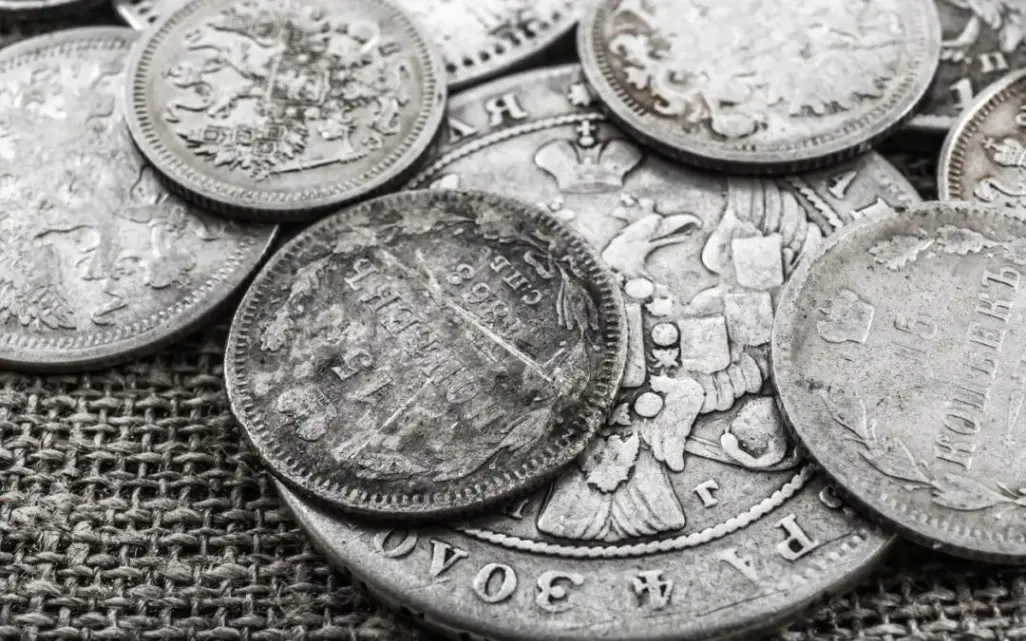For thousands of years, silver had a monetary value making it effective for trade activities. It also possesses an ornamental essence that makes it more desirable. Moreover, in its purest form, silver has optimal reflectivity and conductivity, making it useful for science.
Even with the 25,000 metric tons of silver production in 2020, this precious metal can wither in its aesthetic value.
What happens when silver coins lose their luster and become a cull?
It becomes junk silver and fails to hold any collectible value beyond its bullion essence. Want to know more about junk silver? Read on to find out!
The Essence of Junk Silver

Silver american dollar
Have you ever seen an old collection of junk coins from the 1970s?
At that time, people collected old coins to protect their wealth from slipping away. Indeed, this was seen as a positive asset acquisition without fearing the loss of value.
Back in the day, our ancestors got hold of a large number of rolled coins. Moreover, they sourced it from numerous local banks that could offer authentic silver coins. This initiative kickstarted the obsession of possessing valuable junk silver coins.
In its essence, the term refers to the silver coins circulated in the US before 1965. Putting a modern twist to the meaning, you can refer to these coins as assets that do not have a collectible or numismatic value.
Even then, these 90% silver coins became hard to find as they were discontinued, which intrigued the collectors to find them.
Junk coins became rare, and having them would diversify anyone’s collection. In addition, being lost in history, these coins have lost their fairness and now have a cull condition.
People were more than happy to acquire these junk coins even with the challenges.
The reason behind the popularity of junk silver is its loss of circulation in the economy. Did you know that the last circulated silver coin was a half dollar?
Indeed, people failed to gather information about the 40% silver in this coin until the 1970s!
Overall, junk silver is nothing but rare coins with silver anatomy dating back to 1965 and before.
Back in the 70s, these coins had black labels due to the absence of premium value. However, over the years, the presence of silver made them increasingly more valuable than any junk jewelry.
Are They Really “Junk” Silver?
As you can tell, any coin circulated before 1965 has been referred to as junk silver. Indeed, their rustic and rare essence eliminates the numismatic value. However, if you collect them and showcase them in your portfolio, you will be held higher.
These coins had a substantial amount of silver in them. However, the amount of silver present determines the value they possess.
Before 1964, the minted coins had 10% copper and 90% silver in them. But what does that mean for its face value?
In today’s world, these coins house an estimate of 0.715 ounces of pure silver.
Are you finding it hard to understand? Here is an example:
Suppose you own a bag of 1,000 junk silver coins. Hence, the bag will have 715 ounces which translate to a $1000 value or so.
The actual value might differ, depending on the spot price and the era of the coin. Furthermore, these junk silver coins do not have different pricing in terms of premium, even if it has a collectible condition. Due to this intrinsic value, junk silver failed to retain its value when cupro-nickel entered the economy.
Even so, these coins do not have an official designation as bullion coins. However, the 90% or 40% of silver content makes it valuable, making them not “junk!”
Junk Silver as Bullion Assets
The term bullion refers to the value of silver or gold coins by weight!
People get these coins for enhancing their bullion assets as collectibles, as they tend to never become worthless because of the silver content. Furthermore, the coin’s history offers beauty and wonder to anyone who collects them, irrespective of their 90% or 40% value.
Junk silver has a better price value than any other silver bullion. It is because of the limited supply and value these coins possess. However, 100 ounces of bullion silver bar will have a better value in the US market than junk silver coins.
These fine bullion items are modern and can be produced anywhere, limiting the premium value.
The moment precious metals gain a spike in their value, junk silver also gets a 30% increase in spot prices. Furthermore, the Y2K scare made its value jump 50% than that of bullion products. The demand for silver increased its prices but also enhanced the mining capabilities back in the 1970s.
From there, this silver became refined and met all industry demands. Due to the volatility, people refrained from buying junk silver until 1987.
The market changed in the 80s, and junk silver coins got transformed into .999 silver bullion of fine quality.
Indeed, junk silver has a bullion essence embedded in history!
The Different Types of Junk Silver Coins
We can learn from history that junk silver is a great way to preserve your wealth through assets. Moreover, it is convenient to own and has never been confiscated by the government. But what are the types of junk silver coins?
Dimes (1892 to 1964)
Half dollars (1916 to 1964)
Quarters (1892 to 1964)
Silver dollars (1878 to 1935)
These coins have extreme wear and tear on their body which alludes to the intricacies of history. However, the value of silver remains intact!
Wrapping Up
You can collect junk silver coins from history to enhance your portfolio. Such coins manage to survive the intricacies of industry regulation. Furthermore, they still have a good bullion value, making it ideal for acquisition.
Different junk silver coins contain variable amounts of silver (40% or 90%). Moreover, junk silver in coins was discontinued after 1965, making them lose their value, but retain a limited premium value.
Indeed, junk silver would be an excellent way to solidify your wealth!

 with 700+ reviews
with 700+ reviews



